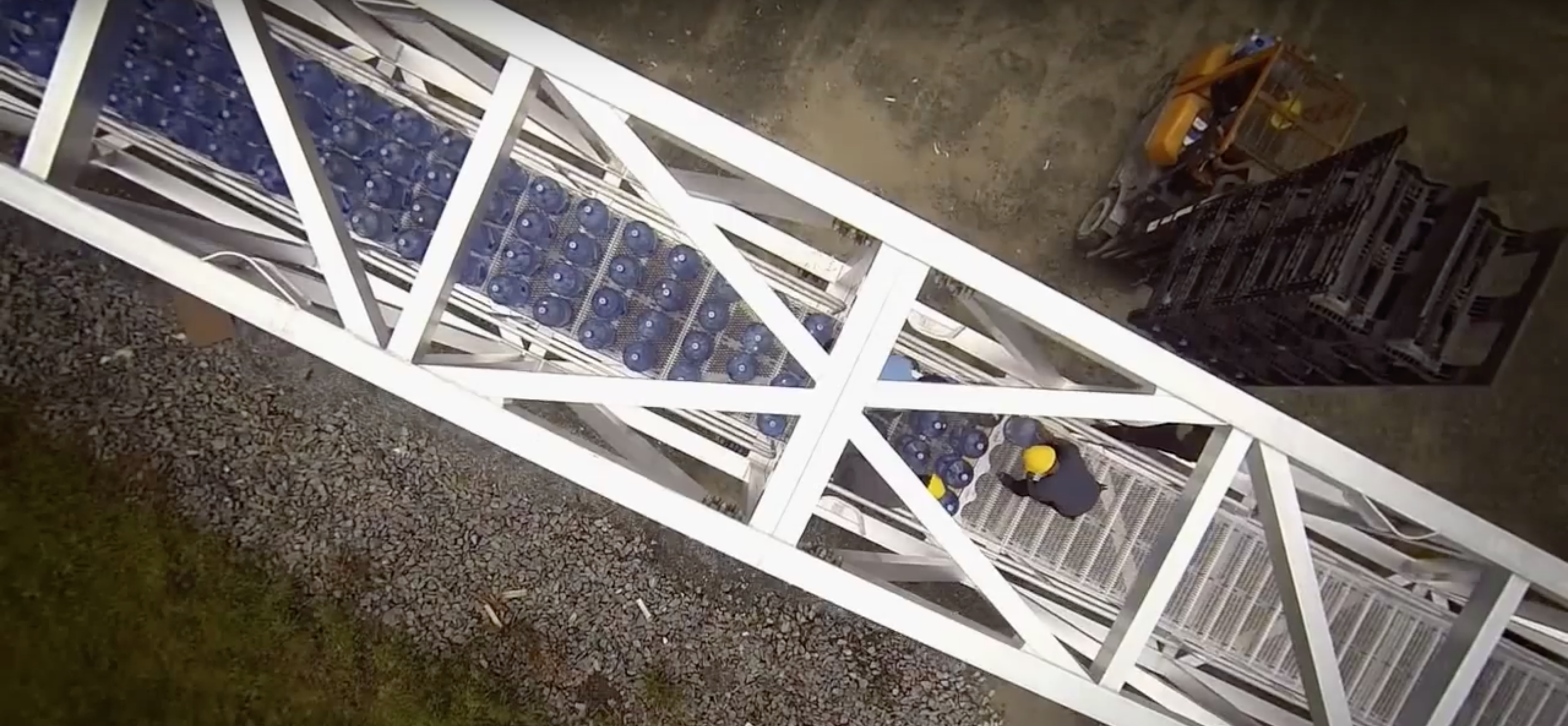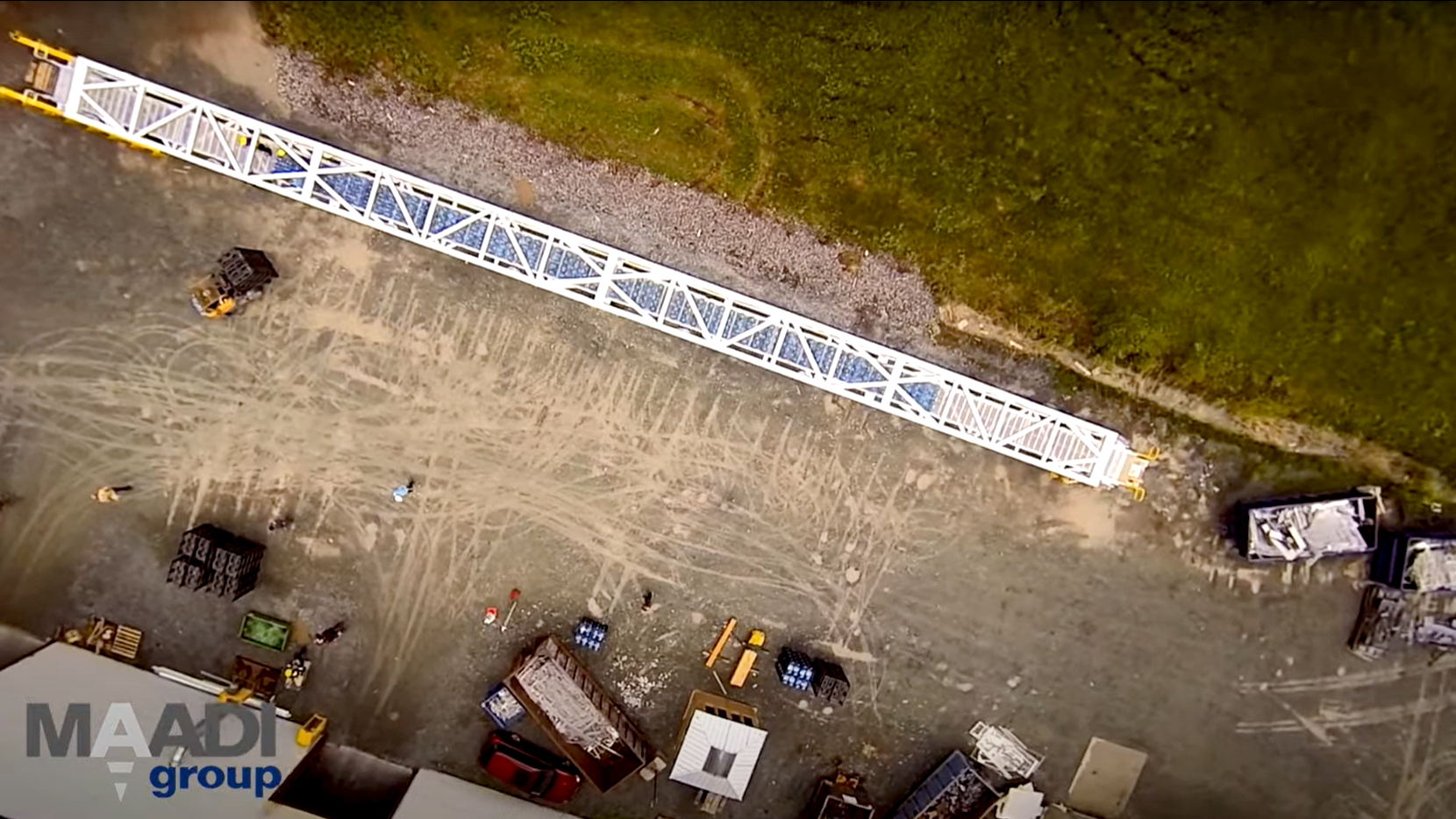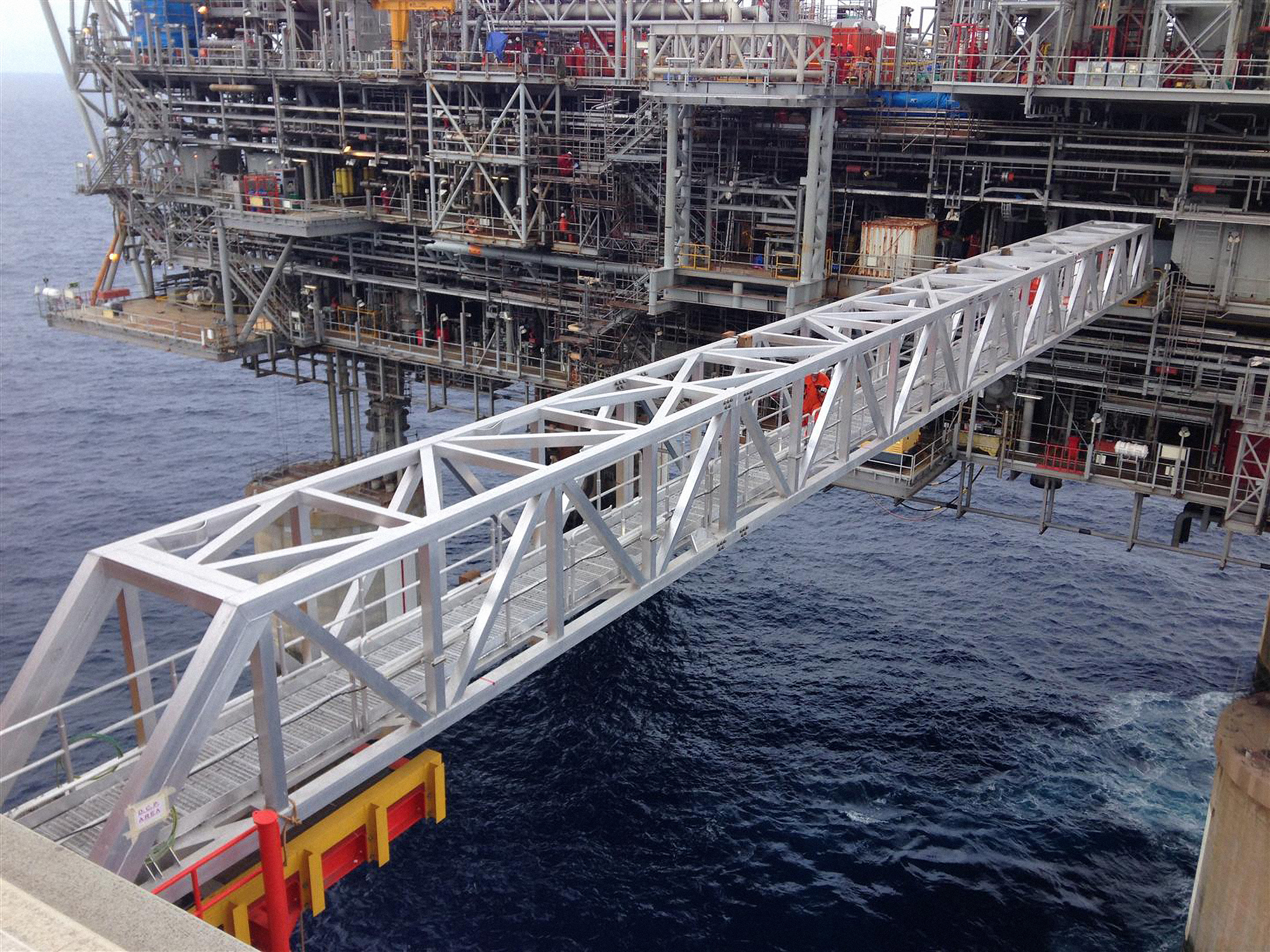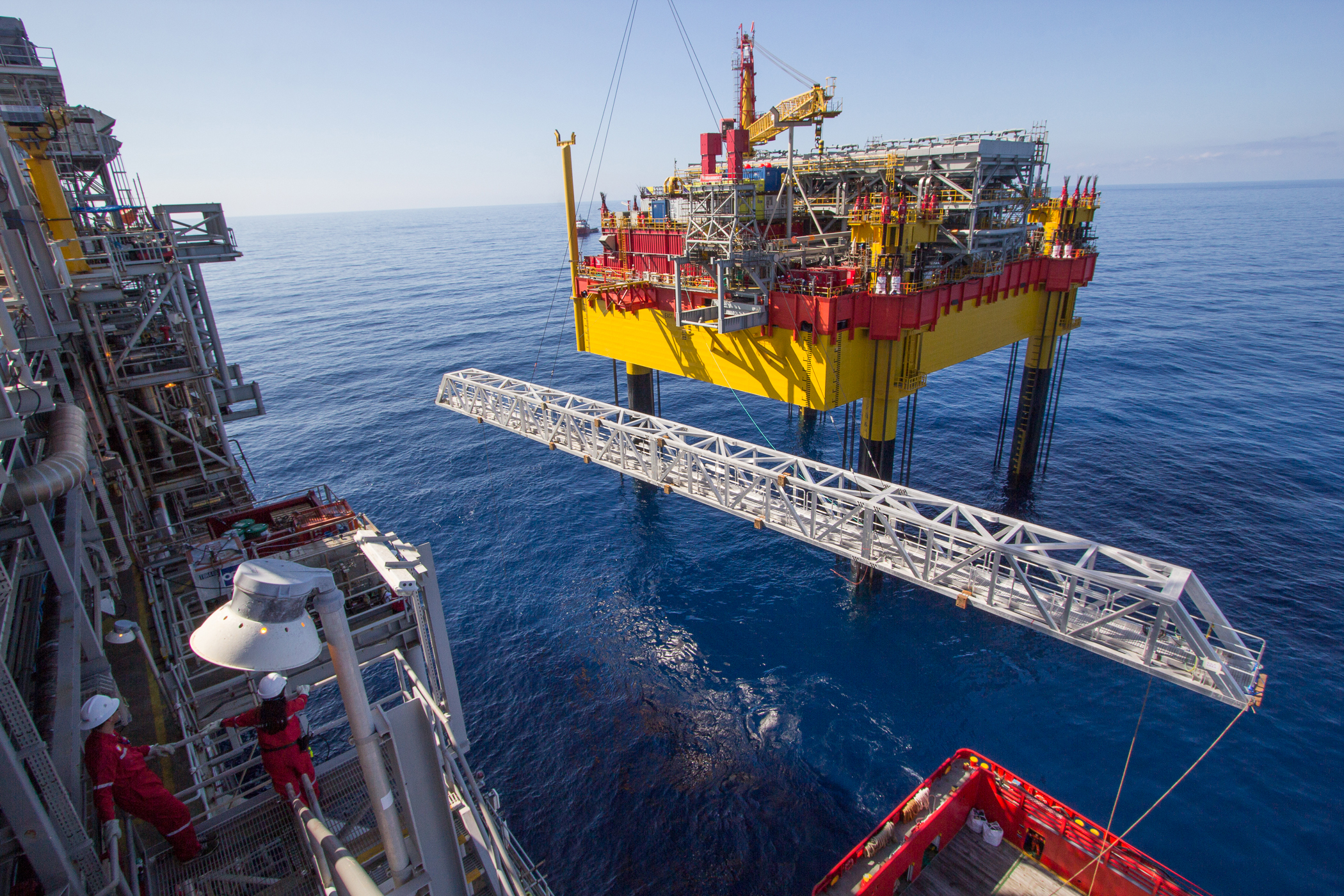The MAADI Group engineering firm’s high-strength aluminum work bridge has successfully completed full-scale testing and analysis of vertical deflection under distributed load to verify that it meets stringent load standards prior to shipping.
July 30, 2014—MONTREAL, CANADA – This utility work bridge spans 46.3 meters and will connect two offshore platforms at its service destination. Aluminum was chosen for the bridge for its lighter weight and resistance to salt water corrosion.
Mandatory Factory Acceptance Testing (FAT) was conducted at a testing site, where 432 19.5-liter bottles totaling 8.6 Tons of water were systematically weighed in increments and loaded onto the bridge deck to ensure that structural strength and toughness prevail under specified weight loads. These tests measure stress effects on key joints and welds, and measure the deflection responses of the bridge.
At a weight of just over 13 tons, the MAADI Group service bridge is lighter than the offshore platform’s 15-ton maximum crane capacity, highlighting aluminum’s weight advantage over steel. The bridge is designed to handle 200 km/h wind gusts in storm conditions. The bridge assembly uses high-strength stainless steel fasteners to eliminate stress corrosion due to the harsh marine environment.
Before load testing began, the bridge was assembled and determined to be level across its length, using a geosystem automatic level, establishing level points at each of two abutments, which are compared and adjusted until precise leveling is achieved across these points. To ensure accuracy, ten percent of the water was then weighed (44 containers) upon calibrating a 5000-lb capacity Toledo scale at an outside laboratory.
Initial load measurements of the Bridge camber under dead load measures the camber center point in millimeters. Measurements were taken again at 20 percent of loading, adding an additional 22 rows, or 88 more water containers from the Bridge’s center outward until all 432 containers of water were loaded and precise measurements were completed. Test result data are used to assess the structural performance and deflection behavior of this aluminum utility bridge as it will be when subjected to worker and equipment loads during actual use offshore.
Water container positioning represents a uniformly distributed load designed for serviceability of 1.5 kilo-Pascals, or 31.25 pounds-per-square-foot. The load testing process systematically gauged the distributed loads on the Bridge. Deflection was compared at the Bridge’s center at each weight increment during testing to verify that the abutments had not moved. Maximum vertical deflection is measured using an optical level and precision rulers, where the deflection must be equal to the Bridge’s length divided by 180, for 256 millimeters, or 10 inches maximum deflection at center.
Distributed load capacity testing verified the truss structure’s ability to bear weight loads across its entire length. During real-world use, the work Bridge must not only pass structural strength requirements, but also meet International Codes and Standards for both the Bridge’s structure and its welds.
“MAADI Group’s utility service Bridge has successfully carried a live load of 8.6 Tons of water! When FAT testing was completed on May 28, 2014, we ran a visual inspection to ensure that all of the Bridge’s welds were sound,” said MAADI Group President Alexandre de la Chevrotière, P.Eng., “We then disassembled the Bridge to visually inspect and measure the bolt holes, to verify that the holes were not excessively deformed. The successful load testing process affirms that we’ve done our job with consistent engineering excellence. We are pleased to provide a proven Work Bridge design/build project to our Customer that meets the most demanding specifications, including ISO9001: 2008 quality certification,” de la Chevrotière noted.
All measurements were confirmed and recorded, certifying that the aluminum bridge passed load testing with the required structural strength to withstand heavy use, before shipping to its offshore site for final installation. Data from these load tests will help MAADI engineers continue to design optimal structural loading solutions for more cost-effective, longer span aluminum pedestrian bridges in the future. Upon completion of two days of FAT, the bridge was disassembled and carefully packed to fit into five high cube containers for shipment overseas.
MAADI Group engineers focus on the structural and economic advantages of designing bridges with cast and extruded aluminum components, to create pedestrian bridges and marine structures that are durable, recyclable and offer a maintenance-free lifespan.





